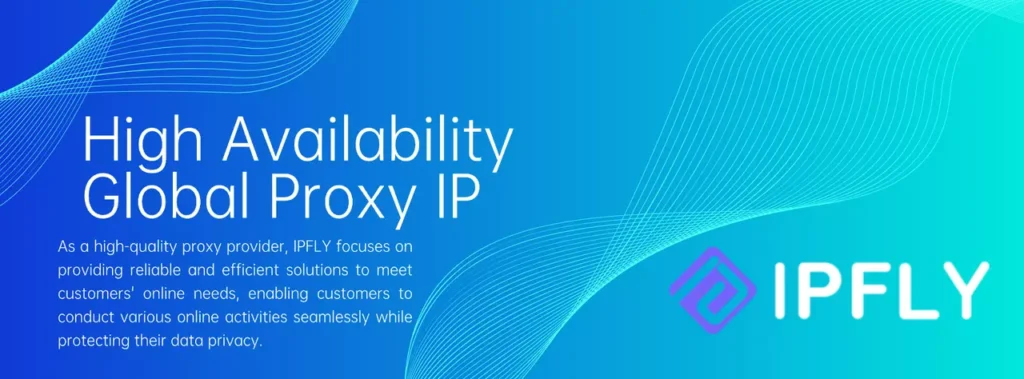Accessing powerful AI tools like ChatGPT is essential for modern business, development, and research. However, many users face significant roadblocks, from geographic restrictions to network firewalls. A proxy server is the most effective solution to bypass these barriers, ensuring you have stable, secure, and unrestricted access.
This guide details the top reasons to use a proxy for ChatGPT and provides a step-by-step guide on how to set it up.

Top Reasons to Use a Proxy for ChatGPT
Using a proxy server routes your internet traffic through an intermediary server, masking your real IP address and location. This offers several key benefits for AI users.
1.Bypass Geographic Restrictions: ChatGPT is not available in all countries. If you are in a region where OpenAI’s services are blocked, a proxy allows you to connect using an IP address from an approved country (like the USA or a European nation), instantly granting you full access.
2.Overcome Network Firewalls: Many corporate, school, or public Wi-Fi networks block access to specific websites, including AI platforms, to maintain productivity or filter content. A proxy encrypts your traffic and routes it through an external server, making it easy to get around these local blocks.
3.Enhance Privacy and Security: When you connect directly, your IP address is visible, which can be used to track your location and online activity. A proxy adds a crucial layer of anonymity, protecting your identity and sensitive queries from being traced back to your personal IP address.
Choosing the Best Proxy Type for ChatGPT
The type of proxy you choose will determine your success. Free or low-quality proxies are often slow, unstable, and already blacklisted by services like OpenAI. For a tool as sensitive as ChatGPT, a premium, high-purity proxy is essential.
1.Static Residential Proxies (Top Tier): This is the best choice for stable, long-term access to ChatGPT. These are real, ISP-allocated IP addresses from actual residential devices that remain unchanged. This makes your connection appear 100% genuine, preventing bans and ensuring a consistent, reliable session.
2.Residential Proxies (High Anonymity): These are also real residential IPs, but they rotate periodically. They offer exceptional anonymity and are excellent for bypassing geo-restrictions.
3.Datacenter Proxies (High Speed): These IPs come from data centers and offer the fastest speeds. However, they are more easily identified as non-residential and have a higher chance of being flagged by sophisticated services like OpenAI.
Highlight: The IPFLY Advantage for AI Applications
To ensure a seamless and secure ChatGPT experience, a high-quality proxy provider is non-negotiable. IPFLY offers a market-leading IP resource library designed for high-performance, secure business operations.
1.Massive, High-Purity Pool: IPFLY boasts a global pool of over 90 million overseas proxy IPs sourced from real end-user devices, guaranteeing high purity and security.
2.The Best of All Types: IPFLY provides Static Residential Proxies that are “100% replicating real residential network environments” and “ideal for scenarios requiring fixed identities,” making them perfect for stable ChatGPT access. They also offer high-anonymity residential proxies and high-speed datacenter proxies.
3.Unmatched Stability and Access: With coverage in over 190 countries and regions and 99.9% uptime, you can securely access ChatGPT from anywhere in the world without interruption.
4.Full Protocol Support: All IPFLY proxies support HTTP/HTTPS/SOCKS5, allowing for easy configuration with any system or application.
Whether you’re doing cross-border e-commerce testing, overseas social media ops, or anti-block data scraping—first pick the right proxy service on IPFLY.net, then join the IPFLY Telegram community! Industry pros share real strategies to fix “proxy inefficiency” issues!

How to Set Up Your ChatGPT Proxy: A Step-by-Step Guide
Once you have your proxy details (IP address, port, username, and password) from your provider, you can configure them in seconds. The most reliable method is setting the proxy at the operating system level, which routes all traffic from your computer through the proxy.
Method 1: Configure Proxy on Windows
1.Open the Start Menu and click the Settings gear icon.
2.Select “Network & Internet” from the Settings menu.
3.Click on “Proxy” from the left-hand sidebar.
4.Scroll down to “Manual proxy setup” and click the “Set up” button (or toggle “Use a proxy server” to On).
5.Enter the IP address (or server address) and Port number provided by your proxy service.
6.Click “Save”.
7.The first time you open your browser and visit a website, a pop-up window will appear. Enter the Username and Password for your proxy to authenticate. You now have access.
Method 2: Configure Proxy on macOS
1.Open the Apple menu and go to “System Settings” (or “System Preferences”).
2.Click on “Network”.
3.Select your active internet connection (e.g., Wi-Fi or Ethernet) from the list.
4.Click the “Details…” button (or “Advanced…”).
5.Select the “Proxies” tab.
6.Check the box for “Web Proxy (HTTP)” and “Secure Web Proxy (HTTPS)”.
7.In both fields, enter the Server (IP address) and Port number.
8.Check the box that says “Proxy server requires password” and enter your Username and Password.
9.Click “OK” and then “Apply” to save your settings. Your connection is now routed through the proxy.
Method 3: Browser Extensions (The Simple Alternative)
If you only want to route your browser traffic through a proxy, the easiest method is to use a browser extension.
1.Go to the web store for your browser (e.g., Chrome Web Store, Firefox Add-ons).
2.Search for a reputable proxy manager extension (like Proxy Switcher).
3.Install the extension.
4.Click the extension’s icon in your toolbar, and enter your proxy IP, port, username, and password to activate the connection.


